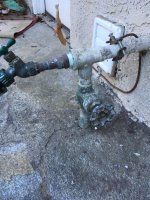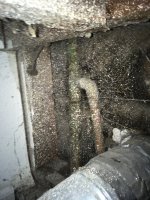The key to successful solder joints is first clean the pipe AND fitting. For someone that is not comfortable soldering pipe, I've found that tinning flux helps. It's 'normal' flux that has some powdered solder in it. It gives you an indication when things are hot enough because the solder in the flux melts...signalling you that it's time to add the solder to complete the joint. Otherwise, with the water based fluxes required these days (versus the acid based stuff that was used for decades), you can overheat the joint, burning things, and making it impossible to get a leak free joint. Heat the fitting all around, or as far as you can get. You cannot solder things if the pipes are wet...the metal won't get hotter than boiling water, which isn't hot enough to melt the solder. You need the pipe open to the air when completing the last joint, otherwise, the hot air expands, and will push through the liquid solder, leaving a leak path. If you've got a shutoff, open it to provide a path for the air to escape.
After cutting the pipe, you need to reform the end so that it's not crimped. Unless you use a hack saw, the tubing cutter will sort of round the end some. They make reamer tools to remove that lip. Failing to do that, especially with the high pressure, creates turbulence and, over time, can actually erode the pipe from the inside if you don't. If interested, look up cavitation.

 Hi all, I would love to install my own pressure reducing valve for the home (about 100PSI now) but I’m stumped as to where I can put it. First picture is outside main coming in. Second is right behind that wall and then it disappears behind the water heater where it splits. These are really my only two points of entry. Any advice on type I would need and if I can even make it work? Thanks
Hi all, I would love to install my own pressure reducing valve for the home (about 100PSI now) but I’m stumped as to where I can put it. First picture is outside main coming in. Second is right behind that wall and then it disappears behind the water heater where it splits. These are really my only two points of entry. Any advice on type I would need and if I can even make it work? Thanks